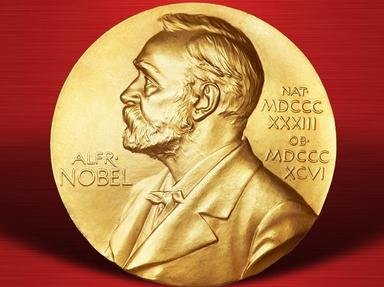
Female Nobel Laureates of the 20th Century Quiz
Women have been awarded Nobel Prizes since 1903, two years after their introduction. In this quiz, you'll receive the name of the laureate and the year of their award. Match them to their field of repute. Good luck!
This is a renovated/adopted version of an old quiz by author Vermic
A classification quiz
by kyleisalive.
Estimated time: 4 mins.